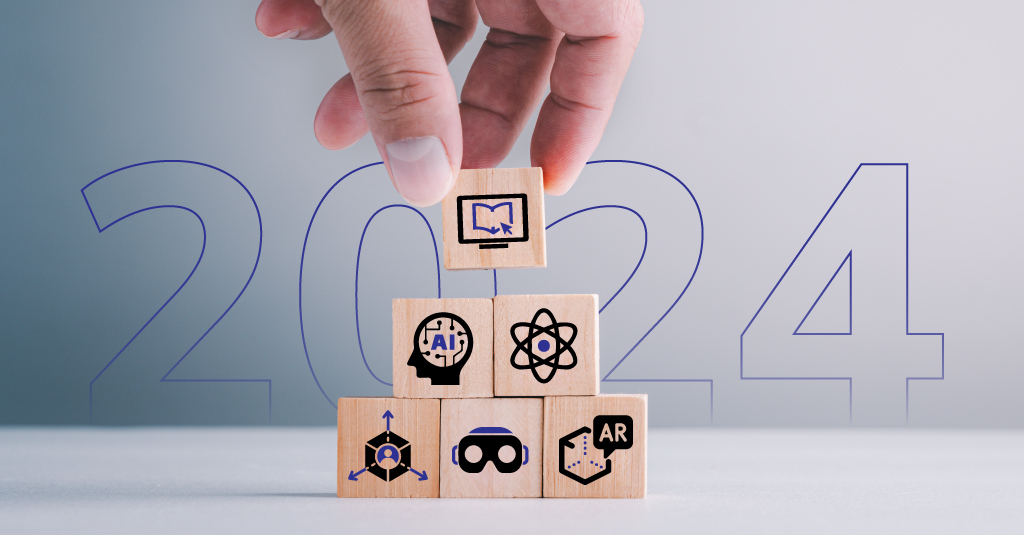There’s always a tremendous amount of activity at the year’s end to think about what the coming year will bring. There is data, some relatively objective, other less so. Yet, it’s also been said “Never predict anything, particularly the future”. How do we reconcile these disparate trends? The approach I take is to talk about the trends I’d like to see. What should learning & development (L&D) be doing? Here, then, are the directions we’d like to see emerge or continue (and, also, ones we’d like to see end).
Learning Science
One of the areas we actively investigate, and apply, is learning science. Here we’re talking about the empirical evidence that suggests what the impacts of various interventions are. If we’re designing learning, shouldn’t we be professional about it? The results generally give us very good guidance, if we’re actually trying to have impact. Of course, they’re not directly applicable, so we’ll need some inference. Still, better to begin with the evidence than from folk superstitions.
There are way too many of the latter, by the way. I was asked to write a book in 2018 addressing the persistent training myths hindering our industry. Yet, 5 years after Millennials, Goldfish & Other Training Misconceptions, we still see evidence of myths like learning styles and generations. While I do see greater awareness of learning science and debunking of myths, it’s still far too little.
What people ideally would do is to start from an indicated problem, and identify the root cause. Then, they can design a remedy for that situation. When it’s about learning, the science tells us to focus on the performance objective, align meaningful practice, guide decisions with predictive models, and illustrate those models in context via examples. Also, address the emotional aspects.
Of course, it’s unlikely that learning science will have specifically addressed your context, so you’ll need a way to test your solution. We don’t do enough of this, but if you look at more recent design practices, whether Map It, LLAMA, SAM, or Pebble in a Pond, you’ll see prototyping and testing. That’s a necessity if we’re going to move beyond the unjustified “if we build it, it is good”. We want to be able to demonstrate that, not take it as a matter of faith!
Technology
We similarly need to take guidance about the use of technology. There are principles out there for existing technology, but what about new technology? How do we ascertain what the meaningful uses of new technologies will be? We need to apply a useful way to judge a priori when a technology may make sense. And then we will still want to prototype and test.
The best way to evaluate new technologies, before testing, is to think about their core affordances, that is, what they inherently support. In particular, their cognitive affordances, what they do that you can’t do in other ways. With an affordance perspective, you can see that Second Life was about social and immersive 3D (at any scale). It had enough cognitive and technological overhead that if you didn’t inherently need those two things, there were better ways. Ultimately, what persisted as value largely revolved around those capabilities.
That holds true today for new technologies. For instance, virtual reality (VR) and augmented reality (AR) have been an eager expenditure for organizations. Yet, where do they make inherent sense? Analyzing the benefits along a continuum from reality, through AR, then augmented virtuality, before VR, provides a useful framing. We can see when augmenting our existing world makes sense, versus using the existing world to supplement virtual goals, and then creating a fully immersive alternate world. We can then evaluate the benefits against the costs, considering alternatives, as most things have lower-tech equivalents.
One of the things we need to do is stop with the ‘shiny object’ syndrome. All too often, when a new technology comes along, we find people throwing their previous approaches into it. Remember going to an event in Second Life, only to be subjected to a slide show? We similarly are seeing the same thing now with VR. While we do want to be testing, we also need to apply some principled stances. Using technology in ways that align with how we think, work, and learn is going to be a positive investment; the alternative is money frittered away.
Artificial intelligence, in particular Generative AI, has become the latest ‘shiny object’. The hype ranges from being a ‘game-changer’ to the new era of intelligent computers. The reality is that these platforms have impressive new capabilities, but also with some known, and likely yet unknown, problems. (They definitely are not truly intelligent, however, as they don’t actually ‘know’ anything! Inside, it’s all symbol manipulation in ways that don’t have a linkage to the real world, unlike our intelligence.) Again, by understanding what they do (probabilistically create plausible prose from an unvetted database), you can know when they make sense, and what sorts of guardrails to use.
Which isn’t to say you should avoid these technologies. In the right place and time, they can be effective tools. You want to do some initial analysis, collecting data, and then you do want to experiment. However, do so at low cost, with low stakes, at first. When you can state with confidence when they add value, you’re ready to then take advantage of the opportunities in a meaningful way.
Organizational Approaches
Which raises the bigger issue: how does L&D in your organization operate? The above suggests a balance between exploration and application (with a ratio perhaps of 1/5). Innovation, in general, is an increasingly important aspect of organizational endeavor, and L&D isn’t immune. Instead, it should be mastered in L&D before being taken elsewhere. What you’re doing is taking ownership of a critical skill that facilitates moving from survival to ongoing success. It’s about thinking in terms of performance improvement, not just ‘learning’. That switch, from focusing on learning to achieve actual impacts, is a critical overview of the trends.
Focusing on performance isn’t new, but it is important. What it enables is to start looking for alternatives to learning. Learning science tells us that actually developing a persistent new ability to do differently is actually quite difficult, compared to other interventions. Which we’d know if we actually were evaluating the impact of our endeavors. We need to look at what the most efficient and effective solution to measurable organizational problems is, not just what it costs us to deliver an hour of training.
Once we start measuring, we need to do so effectively. While asking what people thought of a course may be a starting point, it’s not the end point by any means. Ideally, we work backwards from what needs to change in the org, to figuring out what would be done different, then finally to how to make that happen. It might be a job aid, or an organizational change, not just a course.
Associated with this is becoming more innovative, broadening the toolset to bring to bear upon the problems, and the approaches to solution. Ultimately, being effective in problem-solving will be critical, but L&D shouldn’t go out proselytizing before owning the nuances. Thus, becoming innovative in L&D is the first step to fostering innovation organization-wide.
Once such innovations yield new insights, they should be shared. This needs to happen within communities of practice, within the organization, and with the field as a whole. The language may change, and certain details may need to be changed or removed, but ultimately we all do better when we all improve our game.
Summarizing
What, then, are the takeaways? Here are the trends we’d like to see:
- More performance focus: thinking beyond ‘the course’
- More learning science: in solutions
- More cognitive science: in designing non-learning solutions, and in our processes
- More experimentation: a hallmark of innovation
- More evaluation: so we know how we’re doing
What we’d like to see less of:
- Pushing unsupported notions
- Cargo cult mentality: chasing shiny objects
- Order-taking for courses
That’s our hope for 2024. We don’t expect all organizations to make all these changes at once, but we would like to see increasing moves in these directions. We expect to see new technological announcements and new research results. What we also expect are over-enthusiastic claims, shiny new brandings and packaging, and over-produced and under-designed solutions. We’re hoping to see less of the latter, however. That’s the trends 2024 needs, we think. Now, what do you think?



















